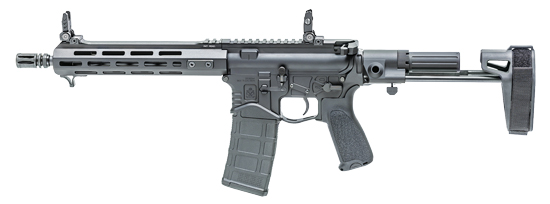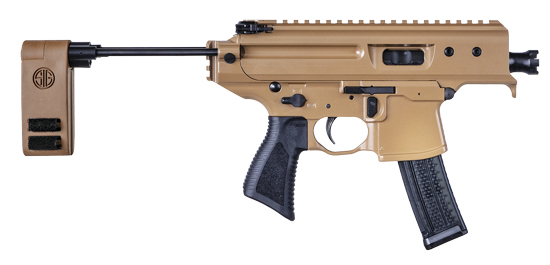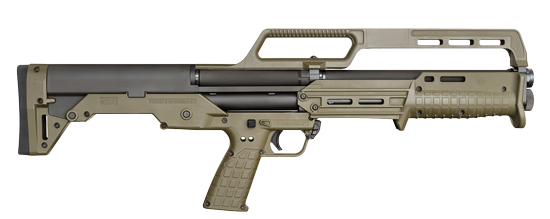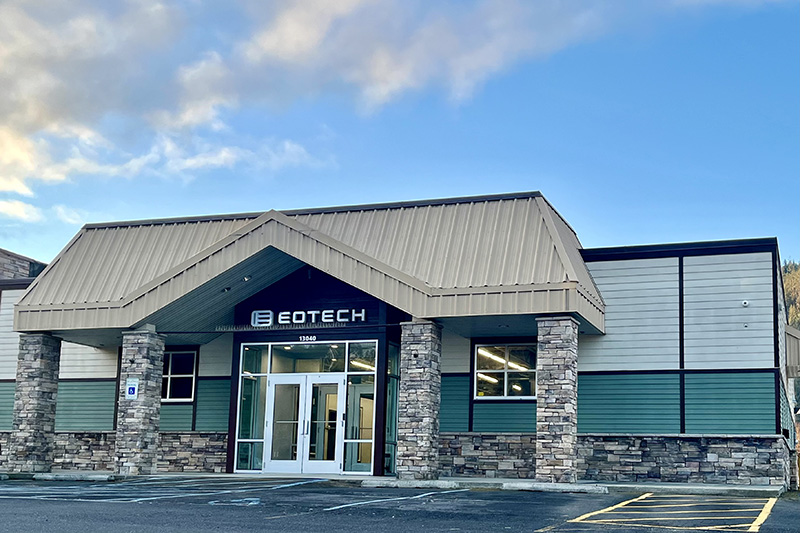“It keeps us alive,” Harvey acknowledged. “I wouldn’t want to have just a gun store.”
Larsen takes a more aggressive approach with the shop his father started more than four decades ago. The key, as simple as it sounds, is figuring out how to get customers into the store.
Several times a year, he puts on some sort of manufacturer promotion. He’s currently working on one with FN. And in 2017, he dedicated the month of October to Smith & Wesson — to considerable effect.
“Half our sales that month were Smith & Wesson. It worked out really well,” he recalled.
He’s also had success with buying spots on local radio stations: “I look at ads to brand the store and keep people familiar with us. My ads are more branding than specific products.”
In the end, the most important thing to understand is when — and when not — to run those spots. Timing is critical.
During warmer months, potential customers already have plenty to do outdoors. Advertising then doesn’t do anything for the shop. But winter is another story.
“People come in because it’s cold outside,” he said.
The Long-Gun Puzzle
Finding The Right Pieces In Today’s Market
There are certain realities faced by every brick-and-mortar gun store. Among them is the simple fact display space is limited — no matter how small or large the shop.
It’s a factor in virtually every inventory decision you make. But it is perhaps nowhere more noticeable than in the world of long guns. There are so many options to consider — from ARs to bolt-action hunting rifles, lever actions, precision long-range rifles, shotguns for duck hunting and shotguns for home defense, to name a few.
John Harvey is the longtime owner of Oak Ridge Gun Range in Orlando, Fla., where customers are generally more interested in handguns. So, faced with lower demand for long guns, he’s adopted a strategy of trying to cover a lot of ground without delving too deep into any particular segment.
“We spread it across the board,” said Harvey, who employs a few simple strategies to help him decide when it’s time to expand his offerings with specific models.
“If someone comes in and wants something I don’t have, I’ll order two. I’ll sell them one and put the other one on the wall,” he relayed.
It’s the same thing with pretty much any gun featured on the cover of one of the popular gun magazines: “You know someone’s going to come in wanting it,” Harvey lends.
Of course, stocking decisions are further complicated by the fact manufacturers are constantly coming up with new variations of their offerings. It’s particularly true with the AR market, said Dave Larsen, owner of Doug’s Shoot’n Sports in Salt Lake City.
“It’s frustrating when a customer comes in and wants the one I don’t have,” he remarked.
Yet only so much can be done on that front. While the AR market has remained steady at his shop, there are just too many manufacturers and configurations. He’s fast reaching the point where he’ll limit the store’s offerings to some of the strongest sellers — including Daniel Defense, Smith & Wesson, Rock River Arms and DPMS — and a few high-end models.
“I can’t drive sales to a particular manufacturer if no one knows who they are,” Larsen said. “There’s no way I’m going to stock it if it’s going to sit there on the rack and cost me money.”
For both shops, ARs and tactical shotguns represent the strongest piece of the long-gun market.
Harvey attributes tepid interest in more traditional hunting rifles to the store’s urban location. He owns another shop in the state’s more rural panhandle, where hunting sales are stronger.
But at the Orlando store, shotguns (particularly the tactical models) tend to do best, especially when it comes to customers interested in self-defense.
“We probably sell a couple of those a week,” he lends. “For $300, you can defend your family very nicely with a 12-gauge shotgun.”
Among the more popular sellers is the Mossberg 500, though they’ve seen growing interest in the company’s Shockwave and Remington’s Tac-14.
Larsen has watched hunting sales decline in recent years. He puts some of the blame on the way the State of Utah has changed the way it regulates hunting: The state is now divided into 45 areas, with a lottery deciding who gets to hunt where. One result is longtime hunting parties might not get to hunt together. And it’s virtually eliminated the spur-of-the-moment hunter who’s been invited by friends and needs a rifle and gear on short notice.
As a result, his inventory of AR-type rifles outnumbers more traditional hunting rifles by two to one.
Larsen still finds room, however, for a few other offerings. Bolt-action rifles tend to be seasonal, with sales picking up a little as hunting season approaches. As with ARs, the problem is figuring out which ones to carry: “There are so many options. The menu is too big.”
He’s also seen rising interest in long-range rifles, particularly the Ruger Precision, Savage chassis rifles and heavy-barrel Remingtons.
And as shown in a recent promotion on the shop’s Facebook page, they even carry a few lever actions. They aren’t the biggest sellers, but they do move a couple a month.
“They’ve got a kind of following,” Larsen said. “Some people have a soft spot for them, like single-action revolvers.”

Oak Ridge Gun Range’s John Harvey carries a large swathe of long guns, without
digging too deeply into one platform. (Editor’s Note: If you look closely, you’ll see a
North American Arms .22 Mag. revolver in his jeans’ watch pocket. “It’s just so lightweight,
I always have it on me,” he shares. At close range, Harvey says the Magnum caliber will
“get the job done” and solves a problem for many CCW customers — it’s very easy to carry.)
Marketing Strategies
Interestingly, these two shops take different approaches toward marketing.
Harvey in Orlando spends very little money on outside marketing efforts. The store has a website and a Facebook page, but that’s pretty much it. “We’ve been here so long, everybody knows us. We don’t really have to advertise,” he said.
They do, though, offer the occasional customer appreciation day, including one in the fall featuring free hot dogs and giveaways provided by Ruger and Smith & Wesson.
“We probably brought in 400 people,” Harvey shared.
The shop does, however, rely heavily on its gun range. Of course, it represents a solid source of revenue in the form of range fees and sales of brass and lead to a local recycler.
But even more, the range serves as a sales generator, offering some 50 or so guns (including half a dozen long guns) for rent for a flat $20 fee. Rarely does a day go by when some customer doesn’t come in looking to try out a few guns before making a purchase.
Current Political Landscape
Coming out of the midterm elections, neither store was expecting a significant shift in customer attitudes.
During Florida’s recount traffic was a bit sparse at Oak Ridge, but it’s not entirely unusual immediately after an election as people take a little time to digest the results, Harvey said.
“The election slows thing down. It confuses people,” he suggested.
Harvey’s thoughts were largely echoed by Larsen, who saw the elections as a nonevent in terms changing the gun-buying landscape. Yes, there might be legislative efforts targeting ARs or high-capacity magazines in the Democrat-controlled House, but a divided government means there’s little chance of it succeeding.
“The conservatives are still in charge of the Senate,” Larsen said. “I don’t think anything is going to happen.”









